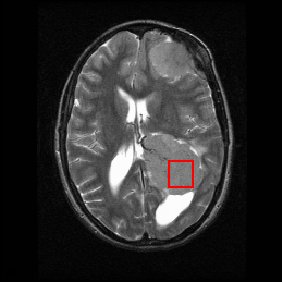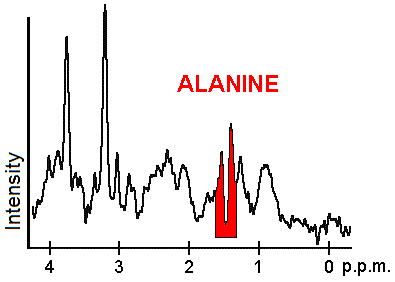Chemical Sciences: A Manual for CSIR-UGC National Eligibility Test for Lectureship and JRF/In vivo magnetic resonance spectroscopy
In vivo (that is 'in the living organism') magnetic resonance spectroscopy (MRS) is a specialised technique associated with magnetic resonance imaging (MRI).[1][2]
Uses
[edit | edit source]MRS allows doctors and researchers to obtain biochemical information about the tissues of the human body in a non-invasive way (without the need for a biopsy), whereas MRI only gives them information about the structure of the body (the distribution of water and fat).
For example, whereas MRI can tell doctors where a tumour (cancer) is located within a patient's body, MRS can, in theory, tell them how aggressive (malignant) the tumour is.
MRS equipment can be tuned (just like a radio receiver) to pick up signals from different chemical nuclei within the body. The most common nuclei to be studied are protons (hydrogen), phosphorus, carbon, sodium and fluorine.
The types of biochemicals (metabolites) which can be studied include choline-containing compounds (which are used to make cell membranes), creatine (a chemical involved in energy metabolism), inositol and glucose (both sugars), N-acetyl aspartate (a chemical associated with the myelin sheaths of nerve cell fibres), and alanine and lactate which are elevated in some tumors.
At present MRS is mainly used as a tool by scientists (e.g., medical physicists and biochemists) for medical research projects, but it is becoming clear that it also has the ability to give doctors useful clinical information which can be helpful in diagnosis and treatment of disease.
MRS is currently used to investigate a number of diseases in the human body, most notably cancer (in brain, breast and prostate), epilepsy, Alzheimer's Disease, Parkinson's disease and Huntington's Chorea.
Example
[edit | edit source]Shown below is an MRI brain scan (in the axial plane, that is slicing from front-to-back and side-to-side through the head) showing a brain tumour (meningioma) at the bottom right. The red box shows the volume of interest from which chemical information was obtained by MRS (a cube with 2 cm sides which produces a square when intersecting the 5 mm thick slice of the MRI scan).
The proton MRS spectrum from this tumour is also shown (as acquired with a 1.5 tesla whole-body MRI scanner). The horizontal axis is NMR frequency (or chemical shift in parts per million, p.p.m., relative to a reference chemical at 0 p.p.m. rather than in the absolute units of hertz) and the vertical axis is signal strength (in arbitrary units).
Each biochemical, or metabolite, has a different peak in the spectrum which appears at a known frequency. The peaks corresponding to the amino acid alanine, are highlighted in red (at 1.4 p.p.m). This is an example of the kind of biochemical information which can help doctors to make their diagnosis. Other metabolites of note are choline (3.2 p.p.m.) and creatine (3.0 p.p.m.).
Both of the above images are kindly provided by The University of Hull Centre for Magnetic Resonance Investigations (http://www.hull.ac.uk/mri).
References
[edit | edit source]- ↑ guest-ed.: M. Rudin. (1992). In-vivo magnetic resonance spectroscopy. Berlin: Springer-Verlag. ISBN 3-540-55029-1.
- ↑ Jansen JF, Backes WH, Nicolay K, Kooi ME (2006). "1H MR spectroscopy of the brain: absolute quantification of metabolites". Radiology. 240 (2): 318–32. doi:10.1148/radiol.2402050314. PMID 16864664.
{{cite journal}}: CS1 maint: multiple names: authors list (link)

